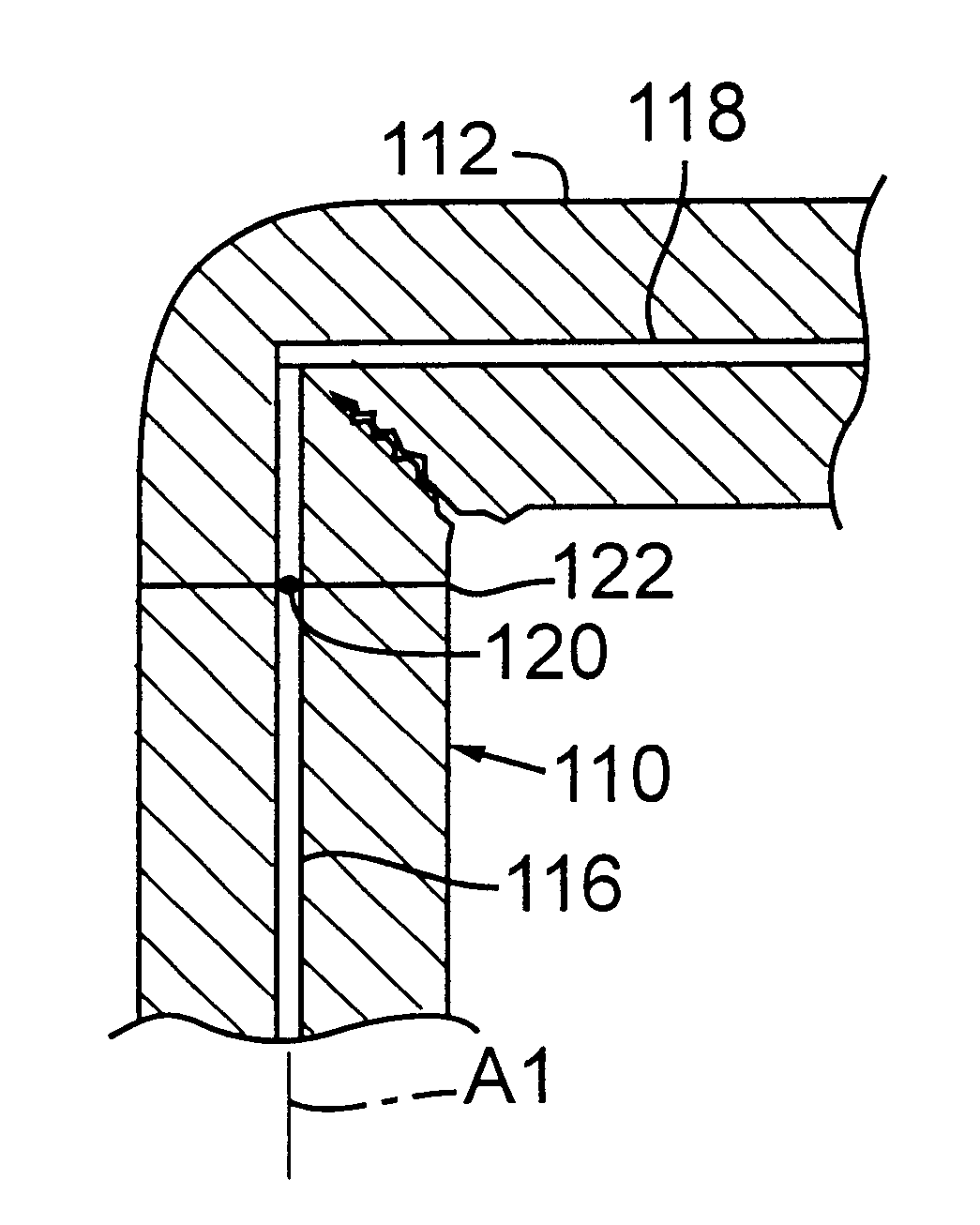Method for inducing controlled cleavage of polycrystalline silicon rod
a polycrystalline silicon and rod technology, applied in the field of methods, can solve the problems of rod breakage during processing, large damage and down time of crystal growing equipment, and single crystal silicon growers have difficulty in obtaining good yield
- Summary
- Abstract
- Description
- Claims
- Application Information
AI Technical Summary
Benefits of technology
Problems solved by technology
Method used
Image
Examples
Embodiment Construction
It was desired to grow 138 mm diameter rods approximately 1550 mm in length in a Siemens reactor using silane as the source gas.
In order to make the resulting rods fracture satisfactorily at a specific location, a 0.5 mm hole was machined into each of several 7-mm starter rods that were 2200 mm long.
The hole was approximately 2.5 mm in depth. For this test, the flaw was located 100 mm below the bridge end of each starter rod.
After the growth cycle, all the resulting 138-mm diameter rods broke cleanly. In nearly all cases, the fracture plane was directly through the flaw. Among fifteen rods that were grown on filaments having the induced flaw, there was a single spall 240 nm in length.
In comparison, seventeen rods grown on similar filaments, but without induced flaws, had ten spalls averaging 224 mm in length with a standard deviation of 253 mm. Available rod length thus was increased by an average of 72 mm when using flawed filaments.
It will be apparent to those having ordinary skil...
PUM
| Property | Measurement | Unit |
|---|---|---|
| length | aaaaa | aaaaa |
| weight | aaaaa | aaaaa |
| length | aaaaa | aaaaa |
Abstract
Description
Claims
Application Information
 Login to View More
Login to View More - R&D
- Intellectual Property
- Life Sciences
- Materials
- Tech Scout
- Unparalleled Data Quality
- Higher Quality Content
- 60% Fewer Hallucinations
Browse by: Latest US Patents, China's latest patents, Technical Efficacy Thesaurus, Application Domain, Technology Topic, Popular Technical Reports.
© 2025 PatSnap. All rights reserved.Legal|Privacy policy|Modern Slavery Act Transparency Statement|Sitemap|About US| Contact US: help@patsnap.com



